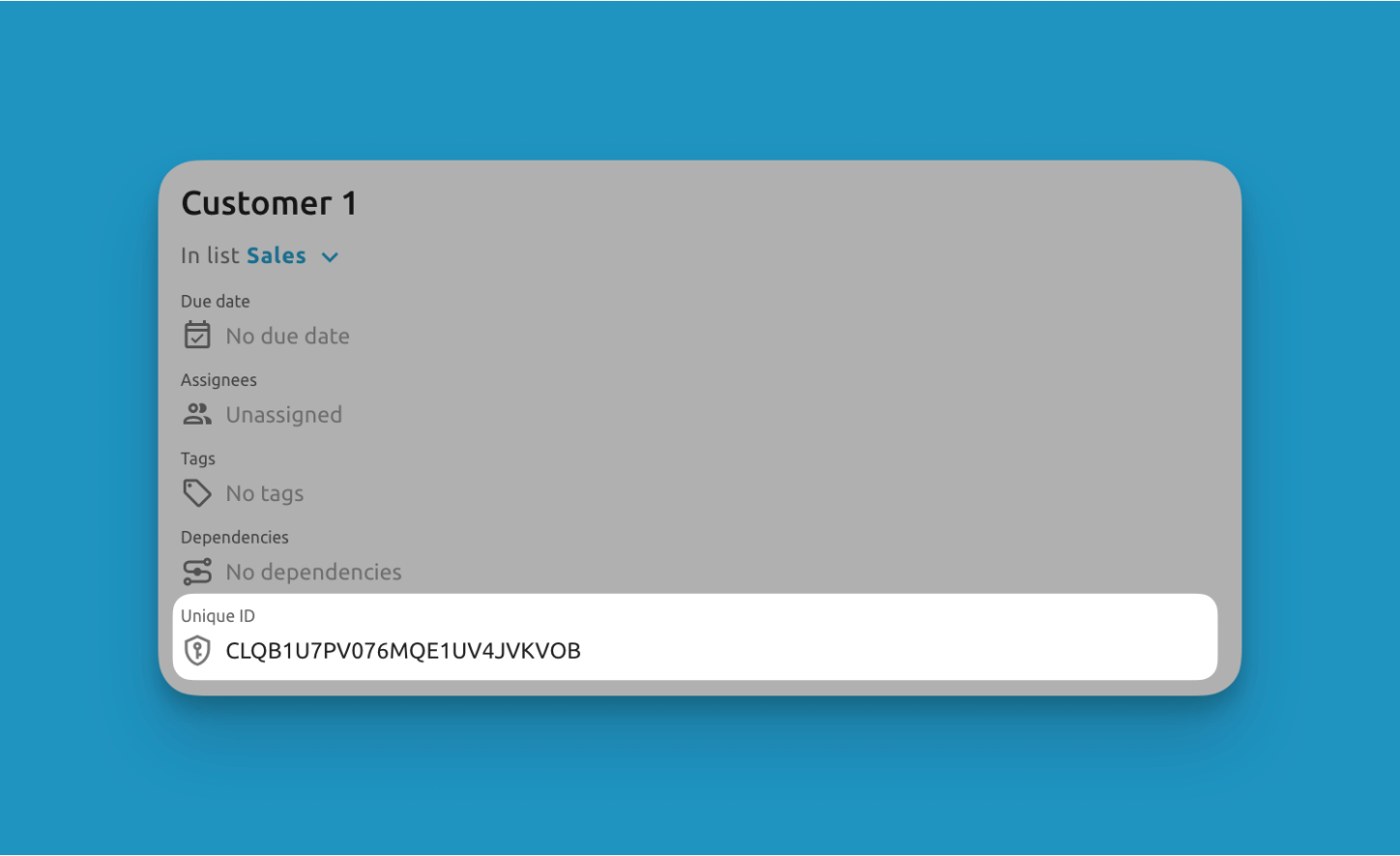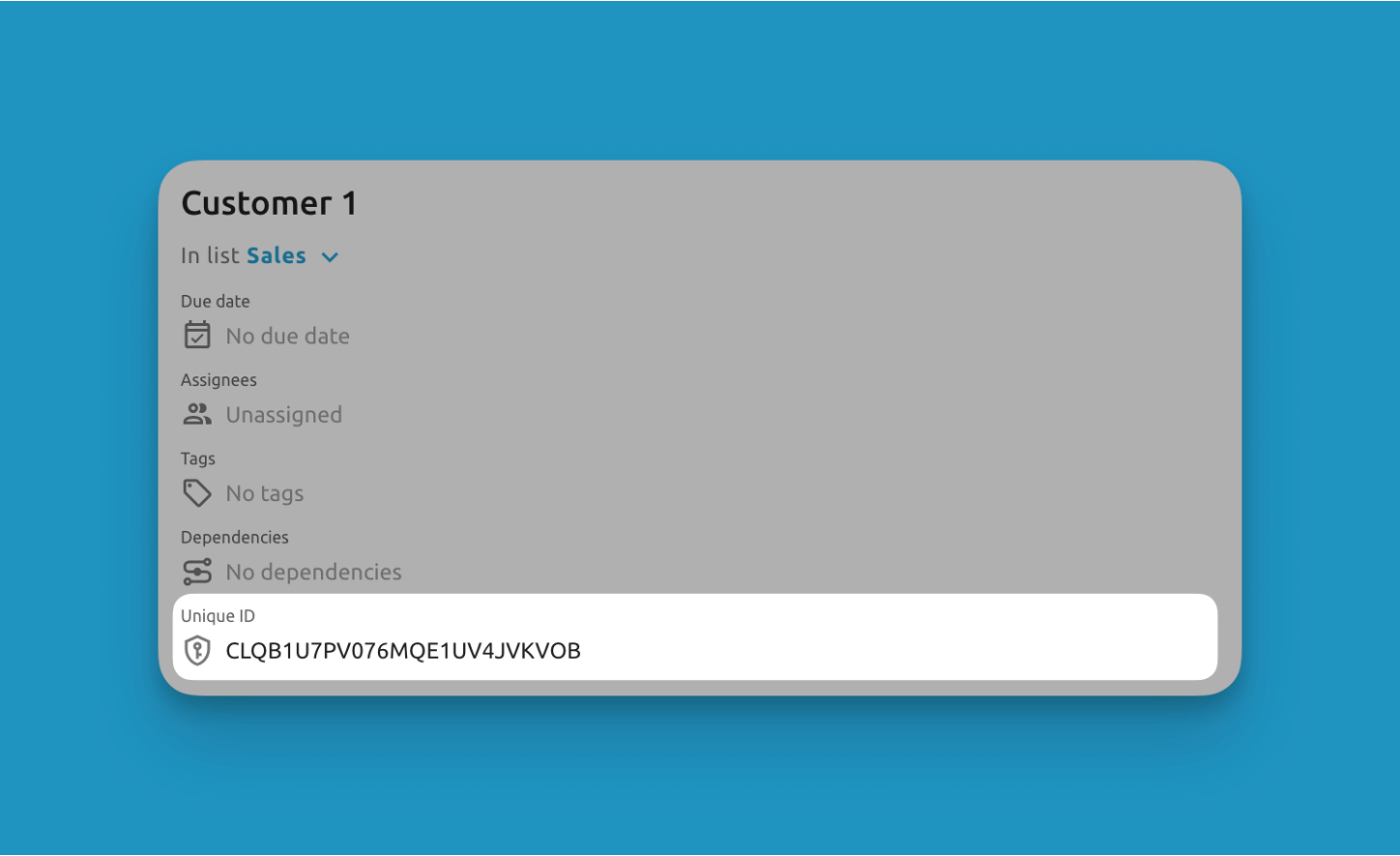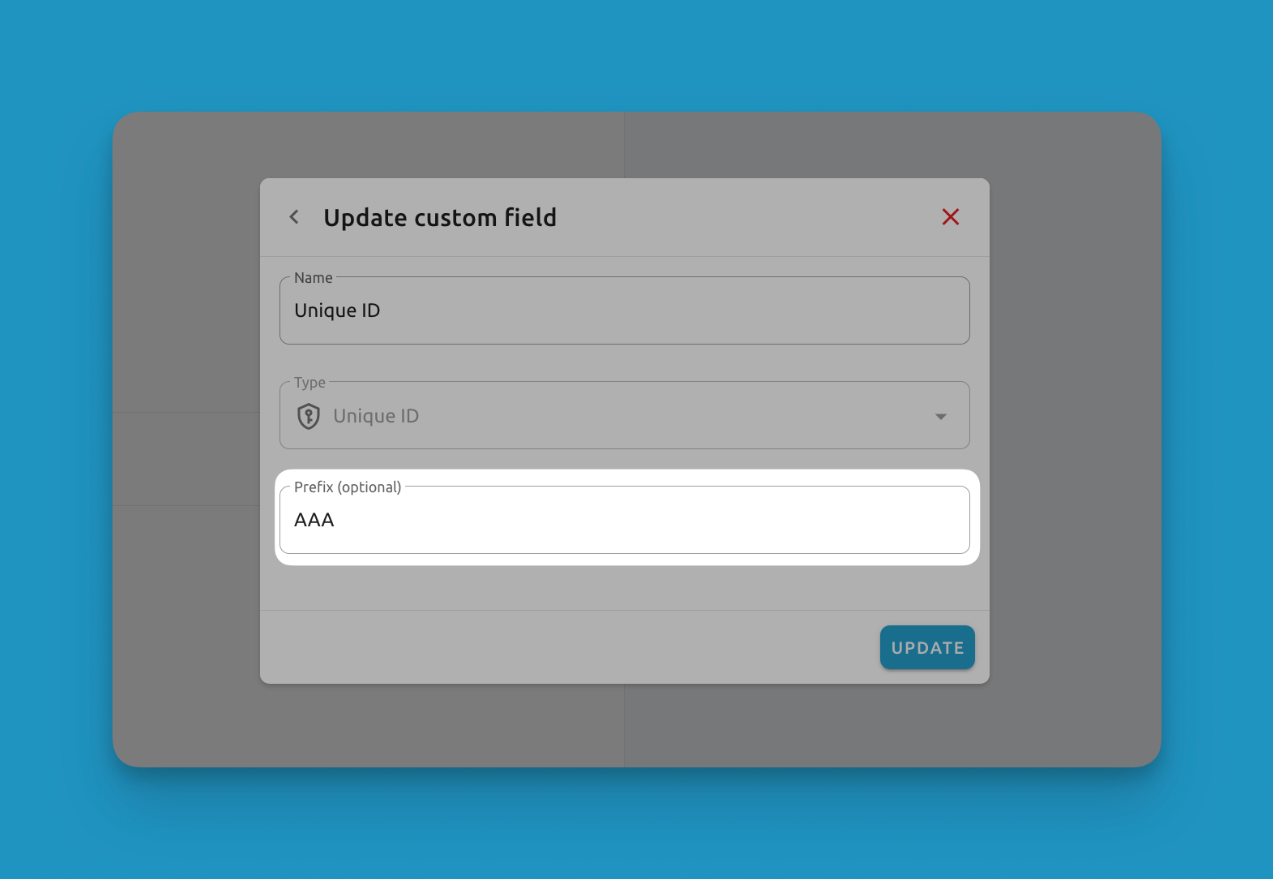The Unique ID field automatically generates a unique identifier for each record. Blue offers two types of unique identification systems:
1. Random Alphanumeric IDs (Default)
The standard Unique ID system generates a unique alphanumeric identifier for each record. This brings immense value by creating persistent keys that consistently identify each record. Even if a record is deleted, its ID will never be duplicated.
2. Sequential IDs
For projects requiring human-readable, numbered identifiers, Blue also supports sequential IDs. When enabled, this system generates incremental numbers (e.g., 1, 2, 3, or with zero-padding like 001, 002, 003) that can be customized with prefixes (e.g., TASK-001, TICKET-002).
Use Cases
Both ID systems enable powerful capabilities:
General Benefits:
- Associating external systems to records via unique codes
- Creating audit trails by tracking ID references
- Searching for records easily in the platform via the ID, even if the record name changes
Sequential ID Specific Benefits:
- Human-readable task references for team communication
- Consistent numbering schemes for workflows (e.g., support tickets, feature requests)
- Easy integration with external systems that expect numeric identifiers
- Automatic title generation with sequential prefixes

Both ID systems essentially establish immutable "social security numbers" for each record. This permanence and specificity enables powerful integrations, analytics, and identification capabilities.

Sequential ID Configuration
When creating or editing a Unique ID custom field, you can enable sequential numbering with these options:
- Use Sequential Unique ID: Toggle to enable sequential numbering instead of random alphanumeric IDs
- Sequence Digits: Number of digits for zero-padding (e.g., 3 digits = 001, 002, 003)
- Sequence Starting Number: The number to start counting from (default: 1)
- Prefix: Optional text prefix for generated titles (e.g., "TASK-" creates TASK-001, TASK-002)
There are 36 possibilities for each of the 25 characters in a Blue Unique ID:
- 26 uppercase letters (A-Z)
- 10 digits (0-9)
This means that there are a total of 8.08×10^35 possibilities or, to be more accurate: 808,281,277,464,764,060,643,139,600,456,536,293,376
To put this into comparison, for every grain of sand on Earth (7.5*10^18), there are tens of quadrillions (1.08×10&17) of Unique IDs!
Random Alphanumeric ID Configuration
Project administrators can configure a custom prefix for all random alphanumeric Unique IDs.

Project Administrators can set an optional prefix for all Unique IDs
Sequential IDs are project-scoped, meaning each project maintains its own sequence counter. When records are copied or moved between projects, the system intelligently handles sequence assignment based on matching custom field configurations. The sequence generation is atomic and thread-safe to prevent duplicate numbers in concurrent environments.